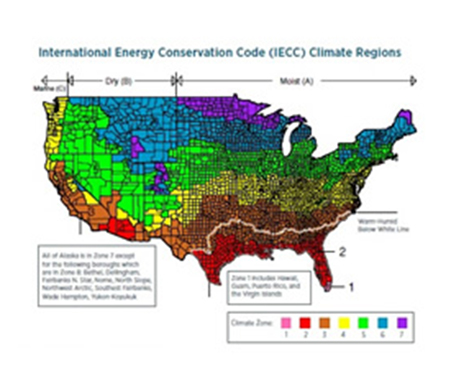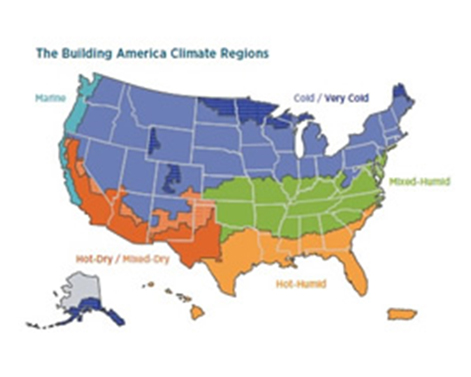Sustainable Building construction
American Society of Heating, Refrigerating and Air-Conditioning Engineers (ASHRAE) is a technical standards development body.
ASHRAE Standard 62.2 is the ventilation standard that applies to low-rise residential buildings three stories or less in the U.S. It is reviewed and revised every three years, with supplement and addenda being published between updates.
HISTORY OF VENTILATION STANDARDS
Early ventilation interests in the U.S. focused on preventing the spread of airborne diseases, especially tuberculosis.
Late 1800s proper ventilation in the U.S. was defined as 30 cfm/person.
1925 this ventilation rate was set by law in 22 states.
1973 ASHRAE Standard 62-1973 required ventilation in most buildings of 20 cfm per person.
1981 ASHRAE 62 reduced the rate to 5 cfm per person in an effort to address the energy
impact of ventilation. This was quickly found to be far too low a ventilation rate.
1989 ASHRAE 62 was updated and set a residential ventilation rate of 15 cfm per person or 0.35 ACH, whichever was higher. However, this version of the Standard contained only a half-page on residential ventilation.
1997 ASHRAE separated the overall standard into two documents with two committees
SPC 62.1 that dealt with all the occupancies other than low-rise residential and
SPC 62.2 that dealt with low-rise residential only.
1999 the complete draft of Standard 62.2 was first sent out for public review andincluded a requirement for continuous whole-building ventilation at a rate of 7.5 cfm per person (assuming 2 people in the master bedroom) plus 0.01 cfm per square foot of occupiable area. This reduced the per-person rate found in 62-89 but added an allowance for the size of the house or apartment.
2003 after three public reviews, the new residential IAQ standard was first published and was updated in 2004 as an ANSI/ASHRAE standard.
2007, 2010, 2013 updates were published per the established 3 year cycle requirement.
ASHRAE 62.2 – A REFERENCE GUIDE.
As with any standard, it is considered situational guidance vs. an all-inclusive best practice. ASHRAE 62.2 is a standard that national experts could somewhat agree upon (see 2010-2013 comparison below) that sets a minimum standard for ventilation and may not be best practice for all circumstances. Some situations would require further customized ventilation rates based on factors such as number of occupants in a dwelling and strength of pollutant sources.
Meeting the ventilation requirements for ASHRAE Standard 62.2 will not always provide enough ventilation for a home and ventilation rates will need to be increased beyond the Standard in circumstances such as these:
High-polluting events such as painting, cleaning, smoking, and construction projects.
Use of unvented combustion space heaters such as unvented decorative gas appliances andkerosene heaters.
Higher numbers of occupants (greater than assumed number of bedrooms plus 1) will increase ventilation needs.
Occupants with health issues such as asthma and allergies may benefit from increased ventilation and/or filtration
COMPARISON OF ASHRAE 62.2 2010 TO ASHRAE 62.2 2013
The most significant change between 2010 and 2013 Standard 62.2 is the increase in the ventilation rate. The basic ventilation rate formula established back in 2003 has remained unchanged through the 2010 version:
7.5 cfm per person (assumes number of bedrooms plus 1) plus 1 cfm per 100 square feet
But homes constructed using the 2013 version, will be ventilated at the higher rate of:
7.5 cfm per person (assumes number of bedrooms plus 1) plus 3 cfm per 100 square feet
This is an approximate 66% increase in air delivered through the ventilation system.
There is not complete agreement among experts as to the need for the additional ventilation rate, even among ASHRAE 62.2 committee members.
Specialist’s criticism on the ASHRAE standard
“This new formula has been criticized by some building scientists, especially those who have long argued that even the older formula, the one specifying a lower ventilation rate, was probably too high. The most prominent critic of the new formula is Joseph Lstiburek, a principal of the Building Science Corporation in Massachusetts and one of the original members of the ASHRAE committee that developed the 62.2 standard.
One of the most prominent defenders of the new formula is Max Sherman, a senior scientist at Lawrence Berkeley National Laboratory and the former chairperson of the ASHRAE 62.2 committee. (Sherman is also a Holladay Distinguished Fellow, an ASHRAE honorific named after my grandfather.)” To read more of the article.
Graphic source:
Building America Top Innovations Hall of Fame Profile – Building Science-Based Climate Maps


“For residences with Whole-House Mechanical Ventilation Systems, the measured infiltration rate (e) combined with the time-averaged Whole-House Mechanical Ventilation System rate,(f) which shall not be less than 0.03 x CFA + 7.5 x (Nbr+1) cfm and with energy loads calculated in quadrature (g)”
Since this is the only Energy Rating Index (ERI) readily available for compliance with the 2015 International Energy Conservation Code (IECC) ERI path, by electing to use the 2013 version, it has increased the ERI values for most homes, making compliance more difficult. The RESNET HERS Index calculation methodology is also used by the U.S. E.P.A. ENERGY STAR for Homes program. They currently use ASHRAE 62.2 2010 for v.3, but have acknowledged if not changed by RESNET, they will use the ASHRAE 62.2 2013 methodology with the release of version 3.1, which takes effect one year from the date of adoption of the 2012/2015 IECC by a state or metropolitan area.The State of Texas adopted the 2015 IECC/IRC chapter 7, effective September 1, 2016.

